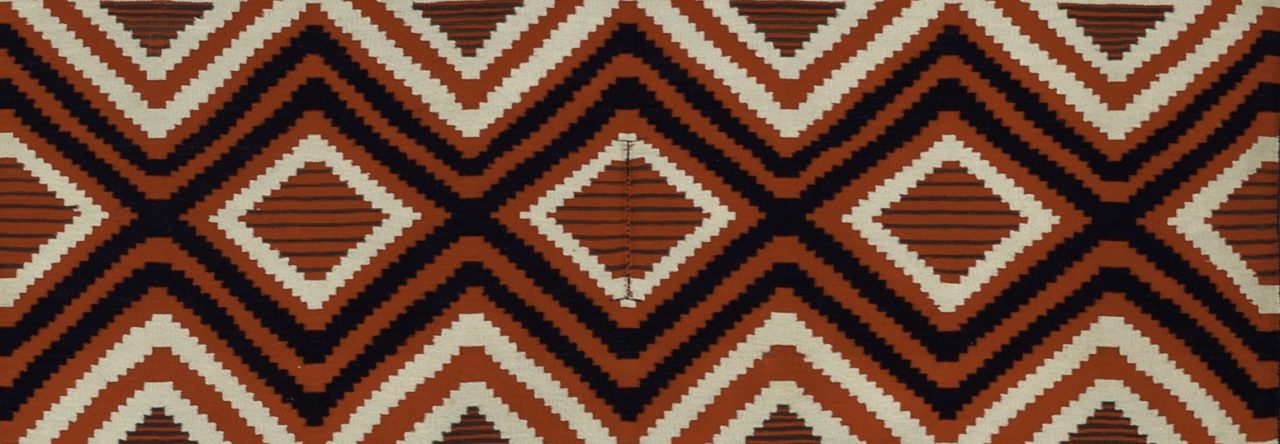Dr. Joe Ben Wheat (1916–1997) was curator of anthropology at the University of Colorado Museum of Natural History from 1953 until 1997. A specialist in both prehistoric and historic cultures, he contributed significantly to Mogollon and Anasazi, Plains Paleo-indian, and African Paleolithic archaeology, as well as to Southwest Native American and Hispanic ethnohistory.
During research for his award-winning book, Blanket Weaving in the Southwest (University of Arizona Press, 2003, hereafter referred to as Blanket Weaving), Joe Ben Wheat examined about thirty-five hundred textiles in public and private collections and analyzed over fifteen hundred in detail. His goal was to establish a baseline for the cultural origins and chronology of southwestern weaving by studying the best documented nineteenth-century specimens in public collections. While about two hundred images and analyses appear in the book, more than 1300 from almost fifty museum collections are presented here in a searchable digital format.
These blankets and related fabrics represent the major textile traditions of the Pueblo, Navajo, and Spanish American peoples of the American Southwest. They range in date from about eighteenth through the twentieth centuries, with most coming from the mid- to late-1800s. Significantly, they constitute the baseline data from which Joe Ben Wheat reconstructed the historical and cultural development of blanket weaving in the Southwest. They belong to museums across the United States and are brought together here for the first time.
The introduction in Blanket Weaving, published posthumously, describes in detail the processes Wheat used to gather his information and one appendix contains a description of the dye tests made by Dr. David Wenger. Wheat conducted the analyses between 1972 and 1994, unless otherwise noted in the database. Information for each textile includes stylistic, temporal, and cultural data; provenance and other collection and historical notes; and technical data on the textile’s structure and materials.
Wheat’s full-page analysis sheets form the basis for all database entries. The original handwritten forms are included as PDFs with most records and can be compared to the transcribed and edited fields. Certain data have been summarized, augmented, or otherwise made consistent, but only when absolutely necessary. When a discrepancy existed between entries by Wheat and other sources (subsequently published books, for example), we retained Wheat’s own entries. His attributions of culture and dating became more assured as his work progressed, but he did not always revise his earlier assessments. We have left entries with his original question marks when they appear, if there are no later comments by him. He did review the dating of some textiles, and in cases where his subsequent remarks exist (sometimes on slides, other photos, or scraps of paper), the entries have been updated. A series of #-marks in any entry denotes problematic handwritten entries that have not yet been deciphered.
Wheat himself acknowledged that the information written on his analysis forms, although a substantial compilation, was neither comprehensive nor final. He pioneered some of the analytical tools used in studying southwestern textiles, and these developed through time. In addition, he faced conditions that challenged accurate note taking in many museum storerooms—poor lighting, inadequate space, and noxious fumes—with little opportunity to double-check information. Most importantly, his interpretations of the data evolved considerably through time. Undoubtedly, future research will reveal new aspects of the textiles and will augment Wheat’s baseline information. We hope that the online publication of this database will further this cause, answer questions, raise new inquiries, and spur investigations forward.
